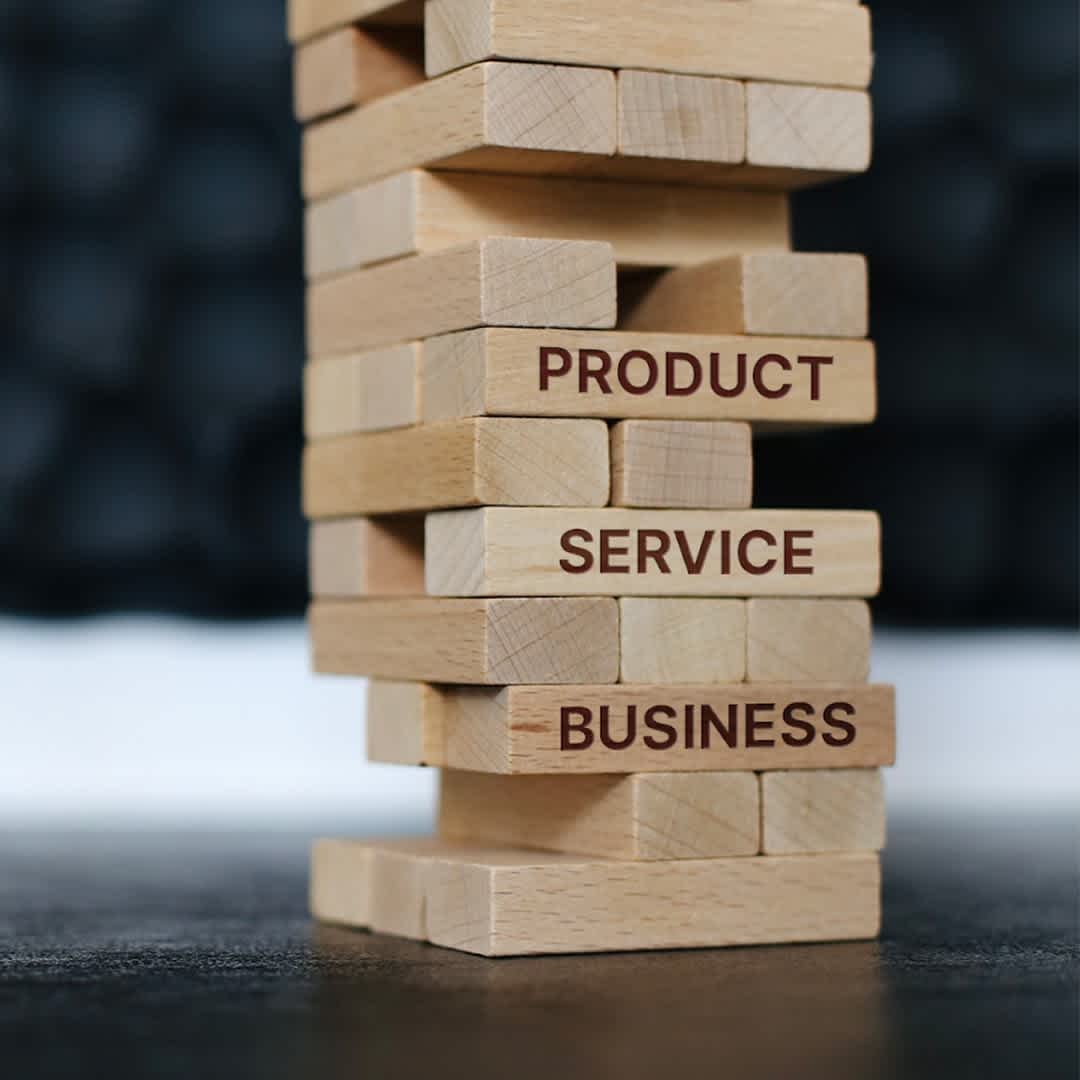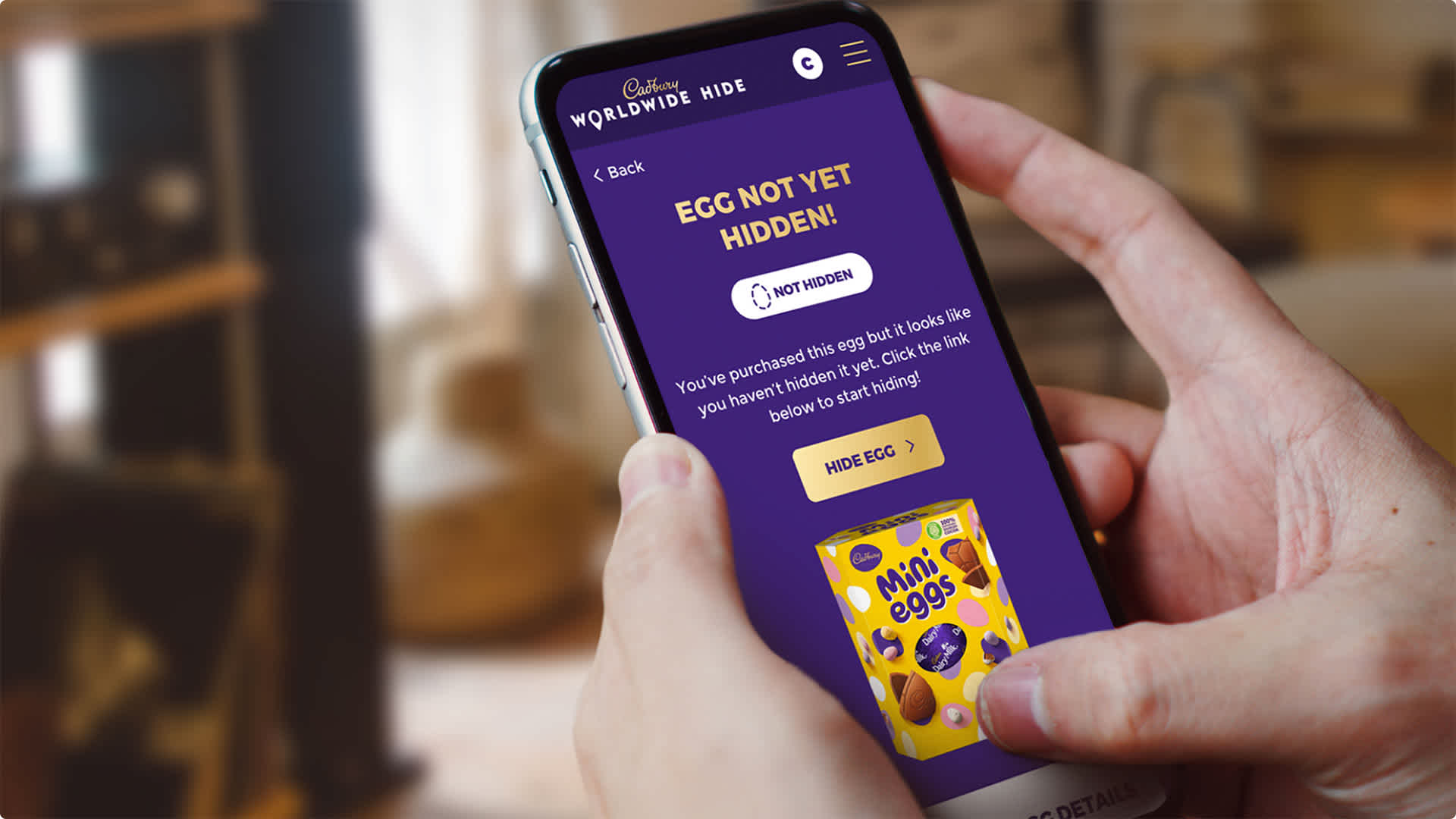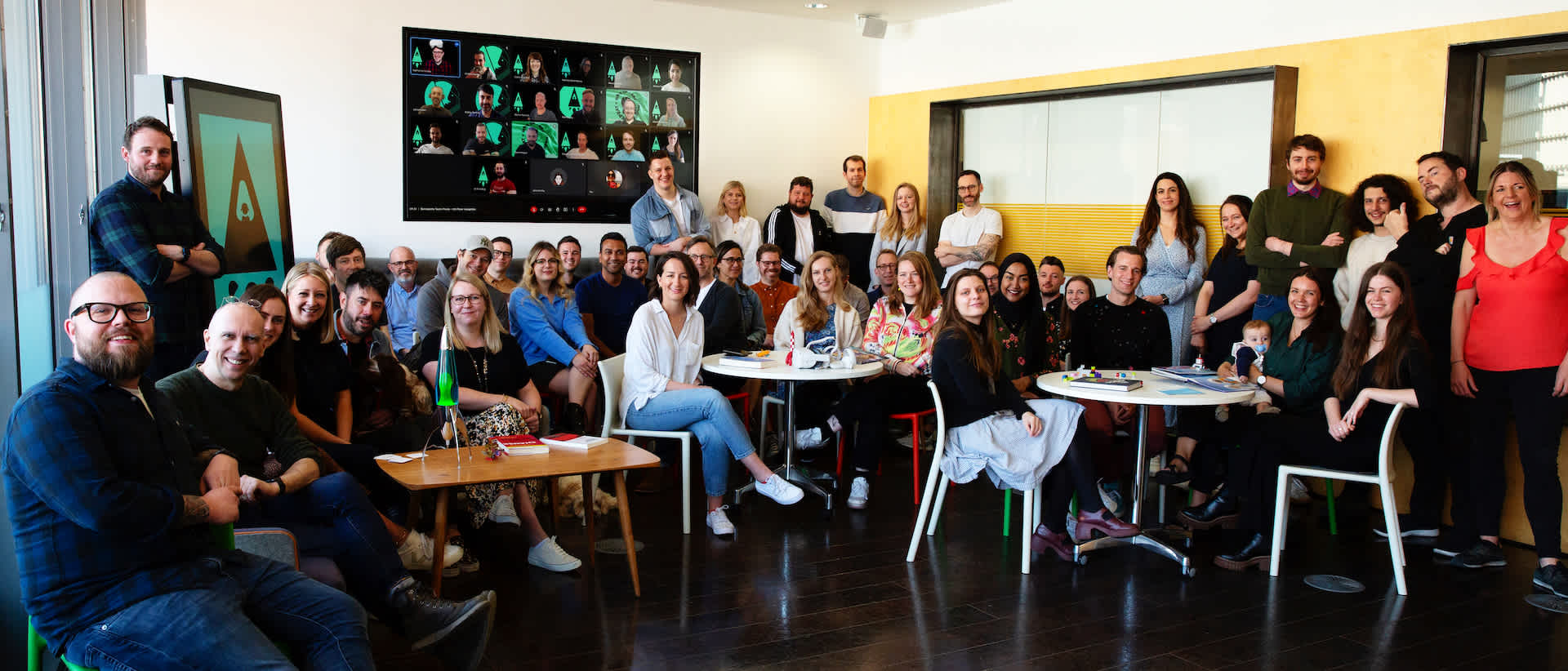McKinsey
Breakthrough in a golden age for design
We are entering a golden age of design, but how do you make the most of the opportunity?

More than ever in times of existential angst, businesses are trying to innovate and solve problems to lift the gloom (and bottom line) through design.
But design is a word that causes confusion, awash with a multitude of practitioners and methodologies.
For every textbook case study of a design-led organisation such as Apple or Netflix breaking through, there are many more stories of botched ‘transformations’ and broken dreams of entrepreneurs. Design doesn’t have to be maligned by poor practice. We have a choice - how to think about and use design.
Now is the time for businesses and marketers to fully commit to design as a process and solve problems in a rapid and effective way. To innovate and solve problems there are typically three ways to do it. Two of these are broadly broken, which we call design by wealth and stealth.
We can take learnings from these and shape a third, leaner and more progressive way to breakthrough with design.
01
Wealth mode or ‘let’s buy our way out of our problems’
This approach is typically adopted by large and legacy companies. Businesses who consider design and customer-centricity as a mere element within a broad top down digital transformation.
In wealth mode you can buy your way out of a problem by outsourcing the thinking part of the solution, typically to consultancies.
Design here lives within organisational and business design frameworks that provide intellectual scaffolding. The partner can then build the intangible and abstract into executable and monetisable programs of change.
The resources and time required for this ‘transformation’ often equate to bloody expensive, especially when archaic systems and processes need detangling.
When transformation works (which isn’t every time, according to consulting firms themselves) it can manifest in re-engineered systems and processes that may benefit the customer experience.
Image: When the panic button is pushed, wealth mode may be a path out of a sticky situation. Credit: The Marketoonist.
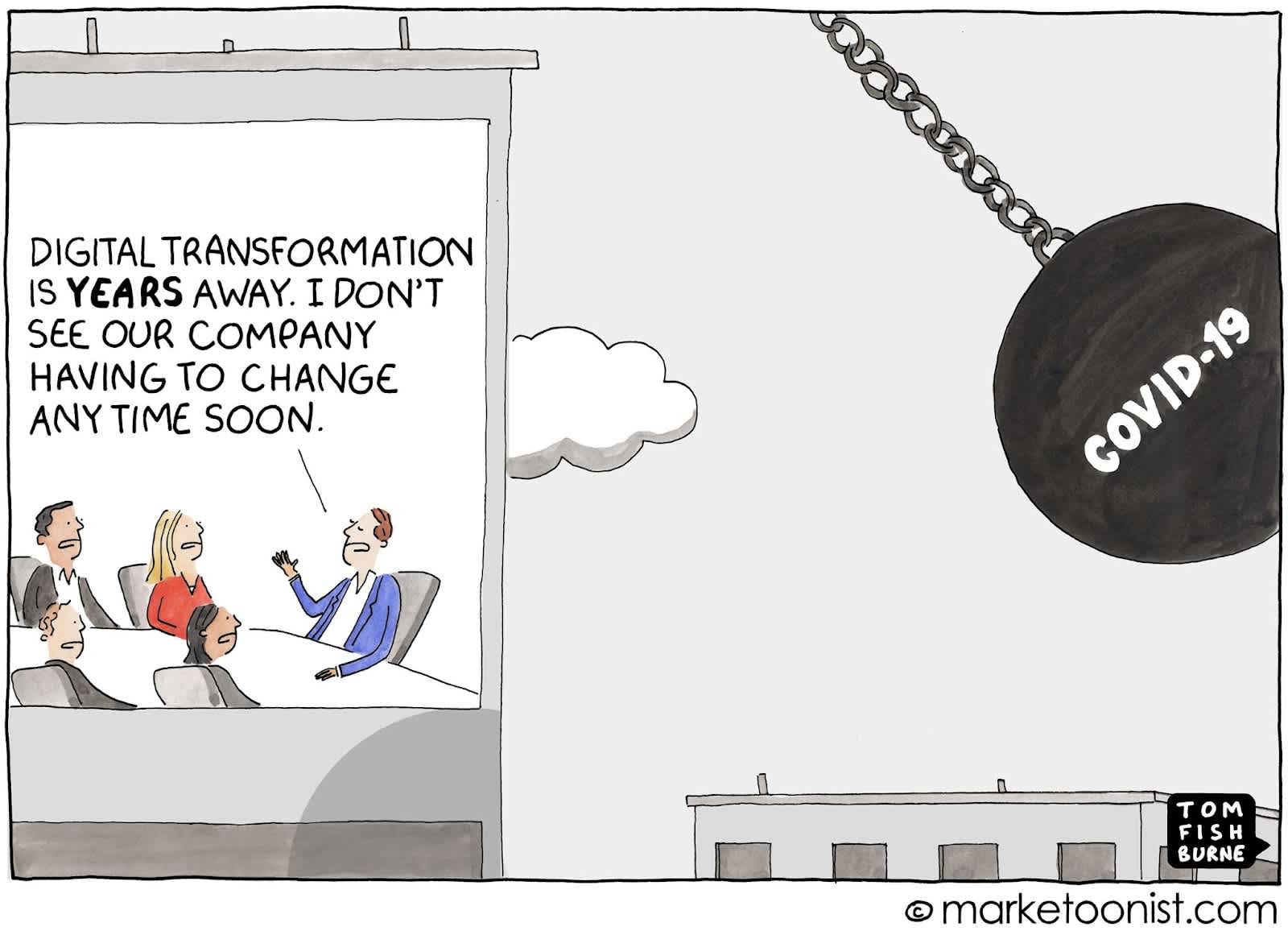
A top down, systems above empathy approach, can mean that transformations are not often properly validated with the customer at key stages. This is where the point of failure lies.
So innovation by wealth can be costly, time consuming and plain risky. Especially within multi-year engagements where the solution you set out to design is no longer relevant.
Mike Tyson
Businesses that were born digital don’t do digital transformation, evolution is in their DNA, free of baggage and distraction that legacy companies have.
A challenger mindset like this can be applied whatever the size of the organisation. To be more agile in the face of intense market forces.
We believe that good design practice can cut through the hierarchy and process that hampers innovation within complex organisations.
02
Stealth mode or ‘I’m going to push through my idea even if it breaks me’
When the kitchen sink is not an option - it’s been innovation by stealth. The smaller and nimble footed use resourcefulness rather than resources.
Design isn’t just for the designers, so onboarding onto problem solving can be a challenge for ideators who just really need the help to progress.
This is true of entrepreneurs and intrapreneurs (those who operate within organisations). Both must articulate their ideas and build the requisite business and funding cases for onward investment.
This can be a lonely cause.
Add to that the ominous backdrop that most start-ups fail and the psychological price of entrepreneurship that is well documented. Tech overlord Elon Musk relates his early startup struggles to ‘chewing glass and staring into an abyss.’
Image: The psychological price of entrepreneurship has been well documented, with high profile founders such as Elon Musk charting the struggle to initiate his big ideas.
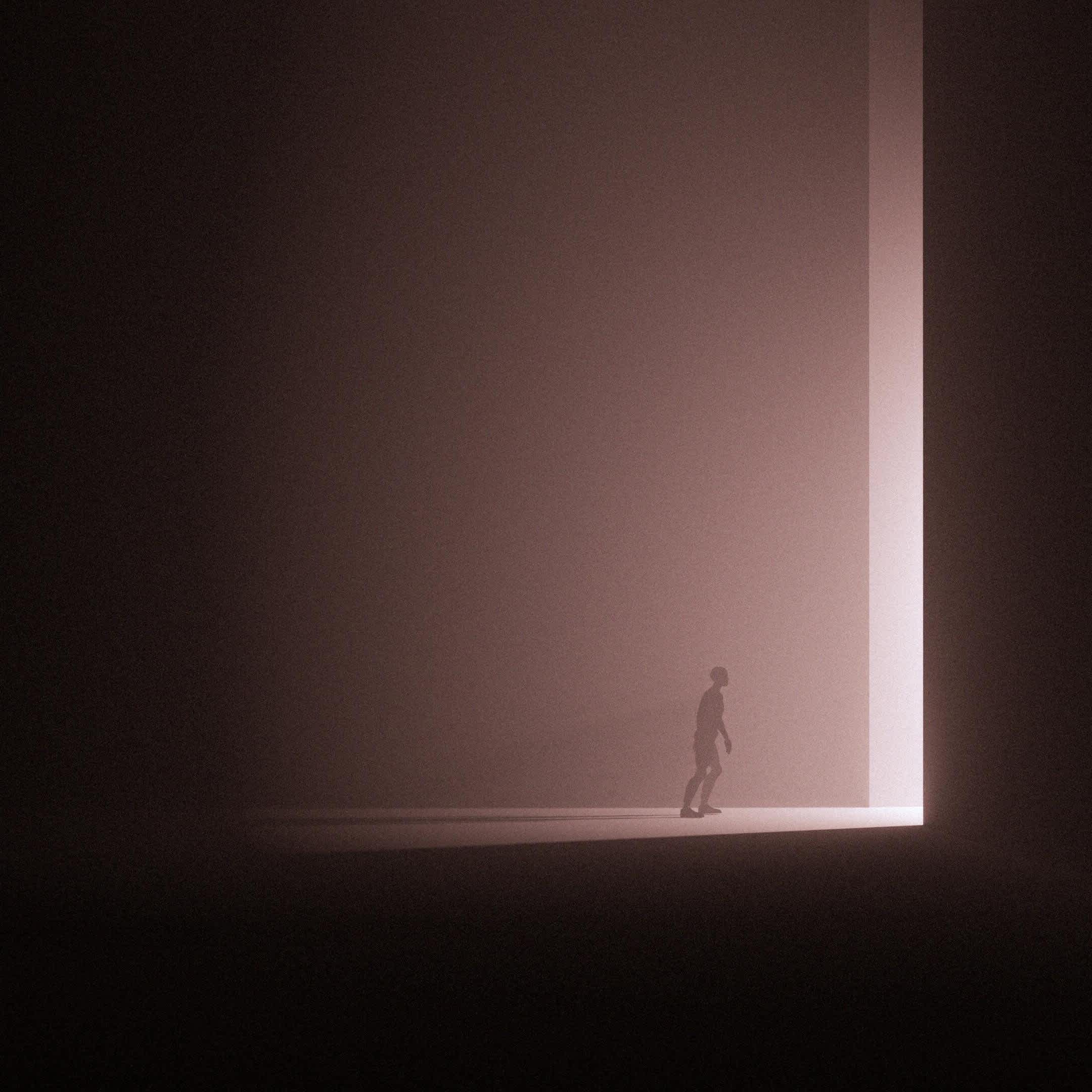
Pushing ideas through stealth is hard enough when you have little time for distractions or to get involved in the design ‘methodology wars’.
Much of the available thinking and resource is bastardised from the thinkboxes, who have oversaturated the design economy with complex methodologies, processes and frameworks.
Could entrepreneurs be spending more time trying to keep abreast of what everyone else is doing, rather than valuable time in front of the white-board? Book covers image: Clarity of thought on the subject of design and innovation can be found in all good bookstores.


Innovation by stealth is draining without the right guidance. Mercifully there is plenty of wisdom to call upon, we trust in the process and can cut the wheat from the chaff to free ideators from distraction.
You may not know it yet but to fully commit to sound and validated design principles will be, well, transformational.
03
The third way or trust in the process and breakthrough with design
It's time to go back to core principles.
Free of the flab, flimflam and distraction outlined in the wealth and stealth models. One that answers the three most pertinent questions of any potential idea or innovation.
DESIRABLE:
Something that your customer really needs?
FEASIBLE:
Will it build on the strengths of your operational capabilities?
VIABLE:
Can it create a sustainable business model?
The world moves at breakneck speed, we must answer these questions in a way that is mindful of the challenges outlined.
Our goal is to use design to breakthrough ideas. We support the ideator in any organisation, large or small and provide the rigour and collateral to progress innovation.
We use a full stack design approach across business, service and product design. Free from the siloed thinking that is prevalent in a top down (wealth) or bottom up (stealth) model.
It’s a real balancing act, which requires a lens on the systems that provide the plumbing of the experience and understanding where business value can be generated through innovation.
With a rigorous design process opportunities can be incubated and put in the hands of customers. Sometimes they may not even work but will almost certainly generate compelling insight for onward ideation.
Those ideas that pass the test can be scaled, this is where true transformation can land.
We enabled digital gifting for Cadbury in the pandemic, and built a COVID-19 hub for easyJet. In both instances the full stack approach delivered:
SPEED TO MARKET - working and validated software in the hands of customers within weeks, not months.
CATEGORY DISRUPTION - enablement of new customer experiences and business models.
BRAND BUILDING - extending the brand idea deeper into the digital domain.
ENGAGEMENT - a delightful experience that reduces friction and customer frustration.
DATA CAPTURE - 1st party data opportunities that enable further scale of the idea.
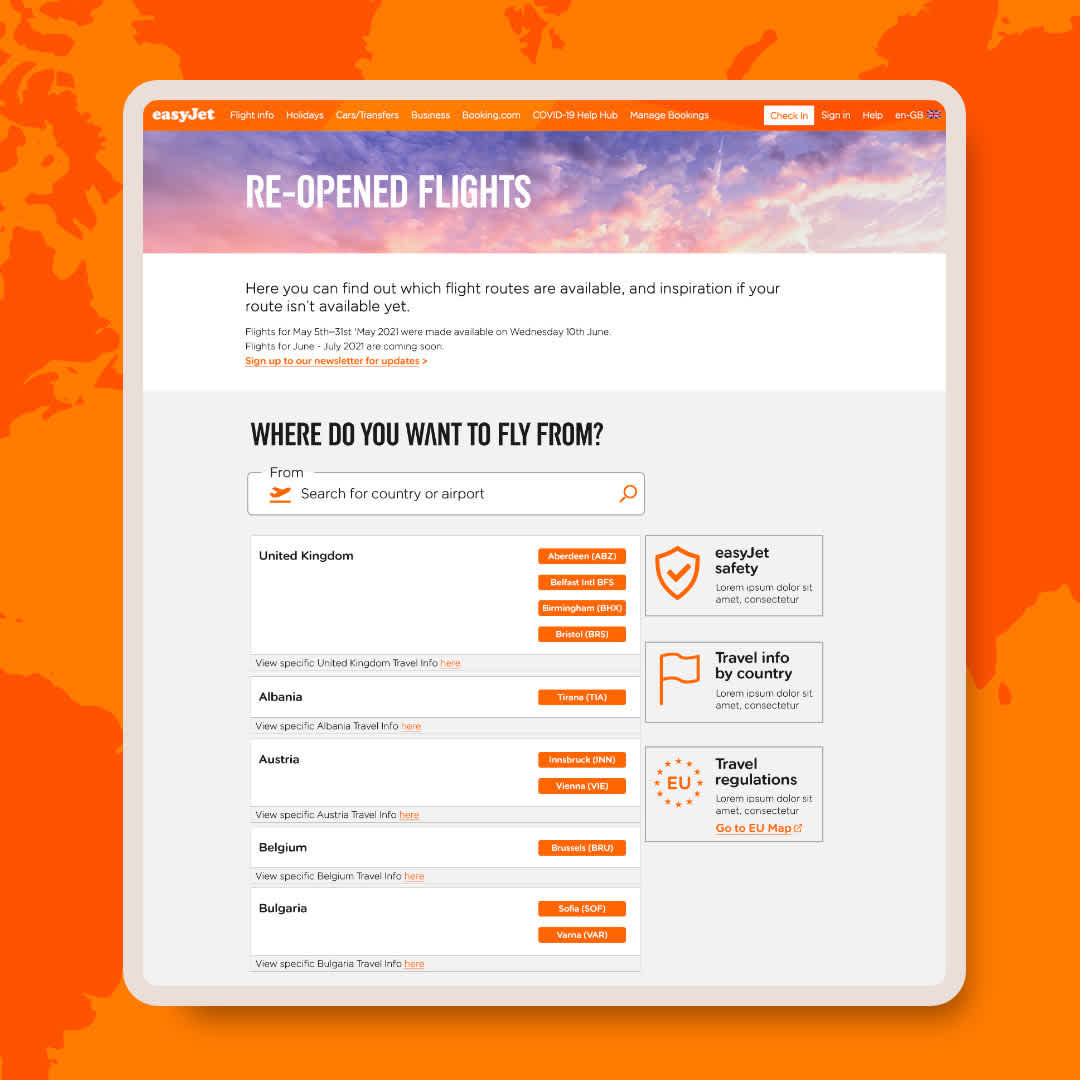
But most importantly, we surfaced a new relationship and a platform for a different conversation with customers. This was only really possible following the careful nurturing of an idea.
So trust in the process, there’s never been a better time to breakthrough your idea with design.
About the Author
Mark Doyle | Experience Strategy DirectorMark has over 20 years blended consulting, agency, start-up and client side experience and the battle scars to prove it.
Mark has served clients such as Centrica on technology transformation, John Lewis and Partners on omnichannel CX strategy and Mars on digital product development. His eclectic folio also includes data-driven coffee shops, building historic castles in Minecraft and launching dockless bike share in the UK.
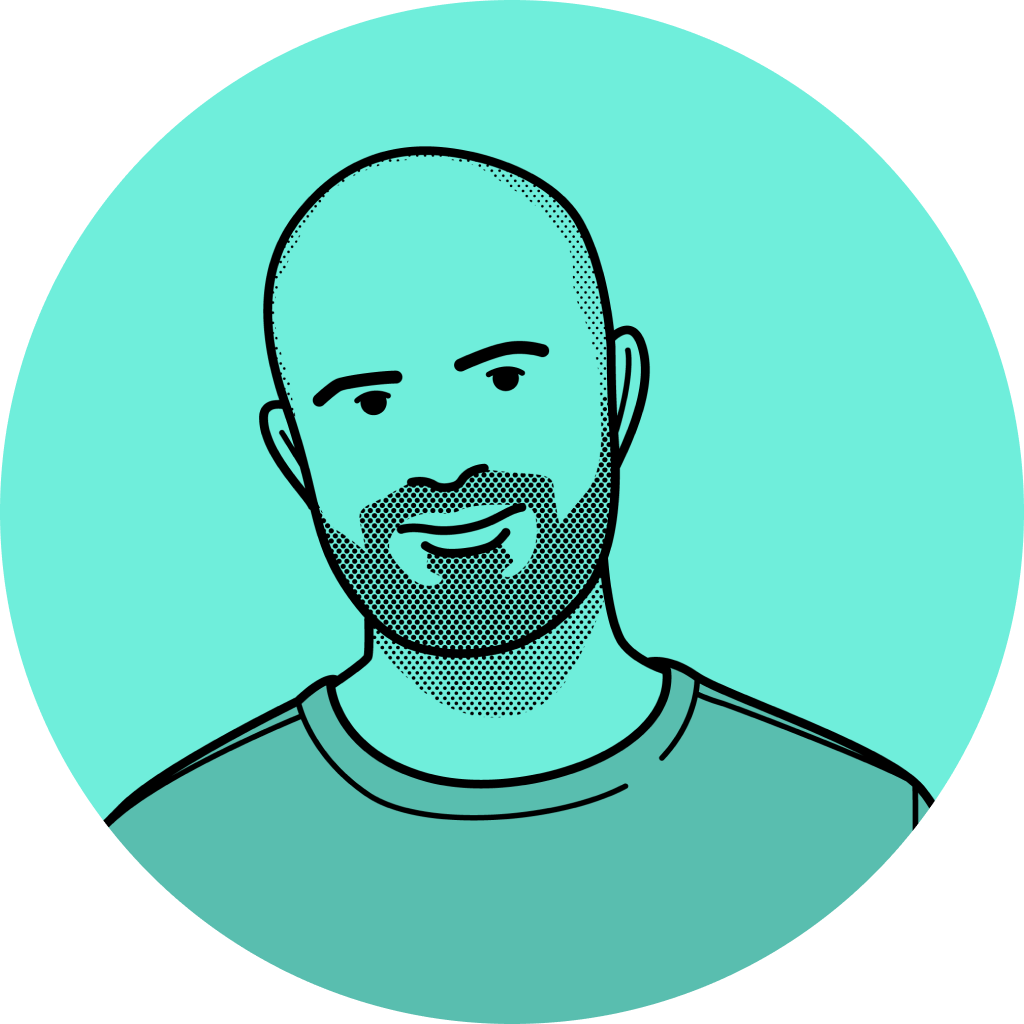
Let's talk
Got a business challenge that’s looking for an innovative digital solution? Or, perhaps you’re interested in joining our collective of digital pioneers? Maybe you just want to know a little more about what we do. In any case, we’d love to hear from you.
